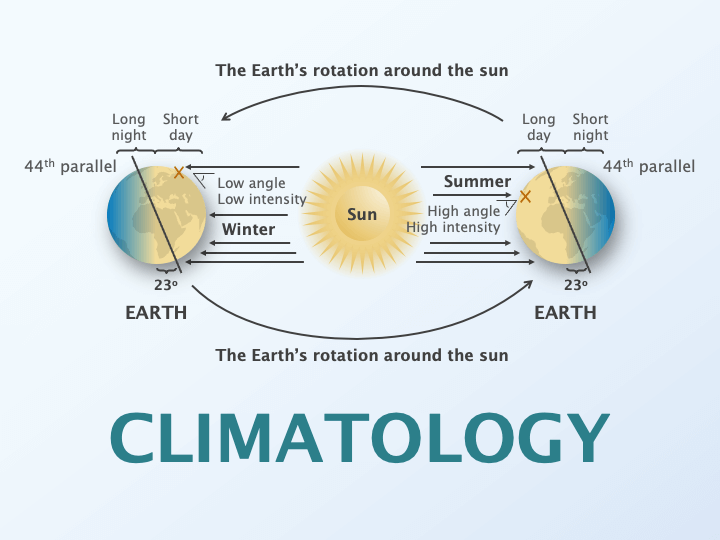Role of Sub-fields within Climatology in Addressing Environmental Challenges:
Climatology is a broad field of study that encompasses various sub-disciplines, each playing a crucial role in understanding and mitigating environmental challenges. Two key sub-fields—synoptic climatology and applied climatology—are particularly important in addressing environmental issues, as they focus on different aspects of climate and its practical implications.
Synoptic Climatology:
Synoptic climatology focuses on understanding weather patterns and atmospheric processes over short- to medium-term periods, typically ranging from a few days to weeks. It involves the analysis of synoptic charts and weather systems like high and low-pressure areas, cyclones, and anticyclones, and how they influence regional and global climates.
- Role in Environmental Challenges: By studying these patterns, synoptic climatologists can predict extreme weather events such as heatwaves, storms, or droughts. This is particularly important for early warning systems, disaster management, and agricultural planning. For example, better forecasting of heatwaves can help mitigate public health risks, while anticipating storms can aid in preparing for flooding or other climate-related disasters.
Applied Climatology:
Applied climatology is a practical sub-field that seeks to use climate data and research to address real-world issues. It involves applying climate knowledge to areas like urban planning, agriculture, water resource management, and energy production. Applied climatologists analyze how climate influences human activities and help design strategies for managing climate-related risks.
- Role in Environmental Challenges: Applied climatology is instrumental in helping communities adapt to climate change. For instance, in agriculture, applied climatologists use climate models to predict growing seasons, optimize crop selection, and manage water usage. In urban planning, they advise on building materials and infrastructure designs that can withstand extreme weather conditions. They also contribute to understanding the impacts of climate change on ecosystems, helping to develop sustainable policies for conservation.
In summary, synoptic climatology helps forecast and understand short-term atmospheric phenomena, while applied climatology translates this knowledge into practical solutions for mitigating the impacts of climate variability and change. Together, these sub-fields are essential in addressing environmental challenges such as extreme weather events, resource management, and climate change adaptation.
Subscribe on YouTube - NotesWorld
For PDF copy of Solved Assignment
Any University Assignment Solution


.webp)